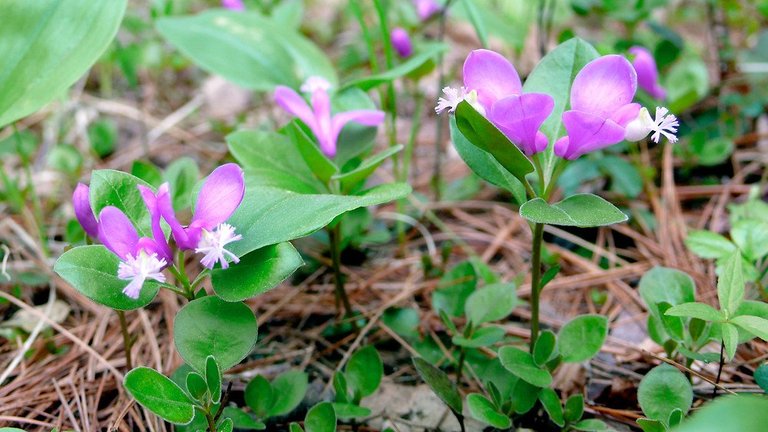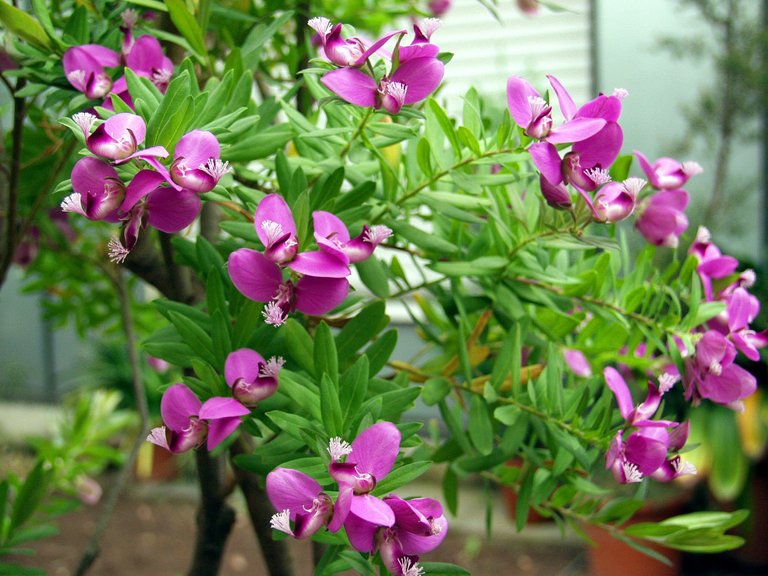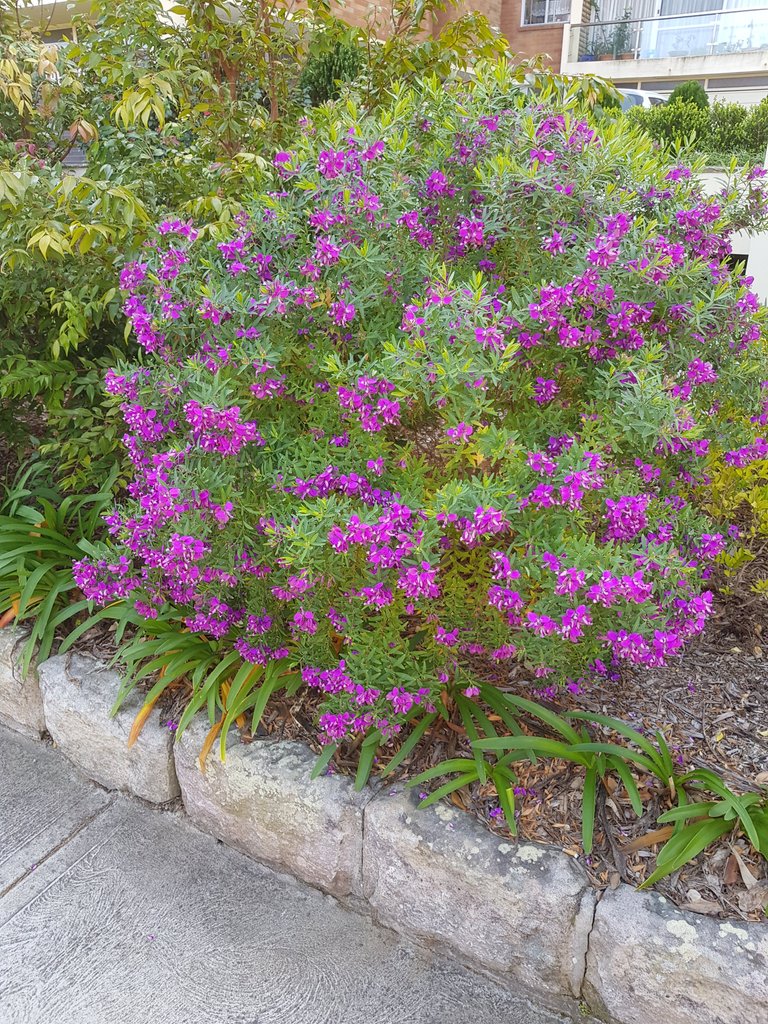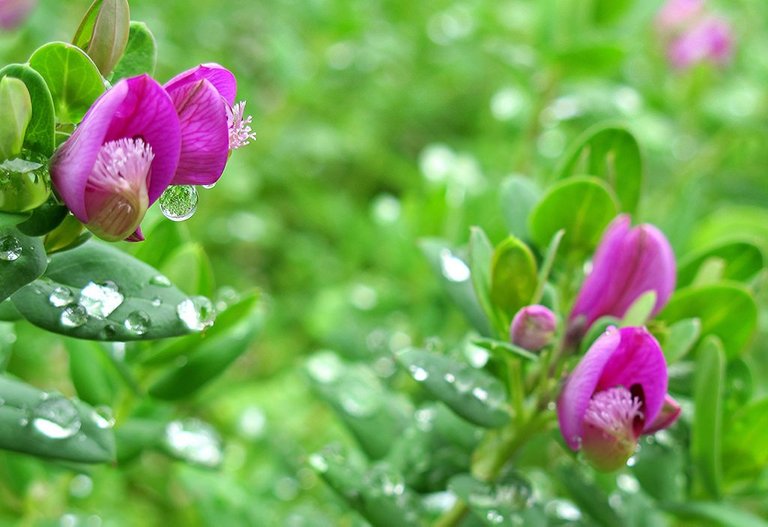Polygala myrtifolia is a common, widespread pioneer shrub with pretty mauve flowers on and off throughout the year with a peak in spring, hence the names Augustusbossie and September bush.
source of image
Polygala myrtifolia varies in form as it changes to adapt to the different areas it grows in, from the harshness of the coast to the drier inland climates. An evergreen shrub, the most common forms reach about 0.6 to 1.8 m in height with a few upright-growing stems and slender branches densely covered with leaves that resemble myrtle. The oval-shaped leaves are usually 25-50 mm long and up to 13 mm wide. The leaves are light green, dark green or slightly grey. Some forms of P. myrtifolia have thin, needle-like leaves. It can also grow into a small tree reaching almost 4 m high.
_-_Botanischer_Garten_Bonn.jpg)
source of image
The buds are green, flat, marked with dark veins and oval to half-moon-shaped. The lower buds open first. The flowers are carried in small clusters at the ends of short branches and look a bit like legume (pea or bean) flowers, but are actually quite different. Close inspection will reveal that although they have two wings and a keel, they lack the banner (also called standard) petal. All polygalas also have a showy, and very distinctive brush-like tuft on the keel. The showy petals, beautifully marked with darker veins, are usually in shades of mauve or purple, but can also be pink scarlet, or white. Polygala myrtifolia has blooms throughout the year with a peak in spring ( August to October) when the plants flower profusely. The fruit is a small, winged capsule.

source of image

source of image
Polygala myrtifolia occurs naturally from the Bokkeveld Mountains near Clanwilliam in the Western Cape to Kwazulu-Natal. Along this wide distribution area changing from winter to summer rainfall, it is commonly found growing on dunes, rocky slopes, in forests, along streams, in scrub and open grassland.
source of article
Sort: Trending